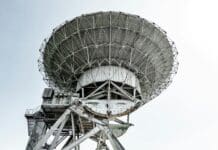This post is also available in:
 עברית (Hebrew)
עברית (Hebrew)
NASA has recently demonstrated a significant advancement in satellite technology with the successful testing of a system that enables a satellite to autonomously identify and respond to environmental conditions in real time. Known as Dynamic Targeting, this system allows satellites to analyze their surroundings and decide where to collect data, all without human intervention.
Unlike conventional satellites, which typically capture whatever data they encounter, the Dynamic Targeting system processes imagery in real-time, identifying meaningful features such as clear skies or natural disasters. The system then determines whether to capture an image based on the relevance of the data. In a recent test, this process was completed in under 90 seconds, showcasing the potential of the system for more efficient data collection.
A notable advantage of this approach is its ability to detect cloud cover ahead of the satellite’s path. By analyzing imagery up to 500 km in advance, the system can avoid capturing obstructed views, saving time and resources. In this way, the satellite can prioritize clear skies for imaging, which is a significant improvement over traditional systems that often waste resources on cloudy data.
This technology was tested aboard the CogniSAT-6, which was launched in March 2024. During the test, the satellite used its onboard algorithms to preview the Earth’s surface, tilt itself to capture forward-looking imagery, and then reorient to collect data only from areas that were not covered by clouds. The satellite executed these maneuvers while traveling at speeds close to 7.5 kilometers per second, according to the press release.
NASA is now looking to further develop this technology to monitor more dynamic events, such as rapidly changing weather conditions or wildfires. The system’s real-time decision-making could be particularly valuable for tracking events that require immediate attention and would otherwise be missed by conventional satellite systems.
In the future, Dynamic Targeting may also be applied to planetary science missions, potentially helping satellites on Mars or other distant bodies focus on specific features like storms or geysers. The technology may eventually be expanded to satellite constellations, enabling a coordinated approach to observing Earth and beyond.
As space-based systems become more advanced, innovations like Dynamic Targeting could play an important role in improving the efficiency and responsiveness of satellite data collection.


























